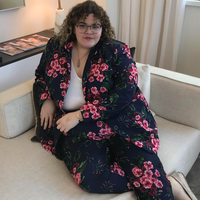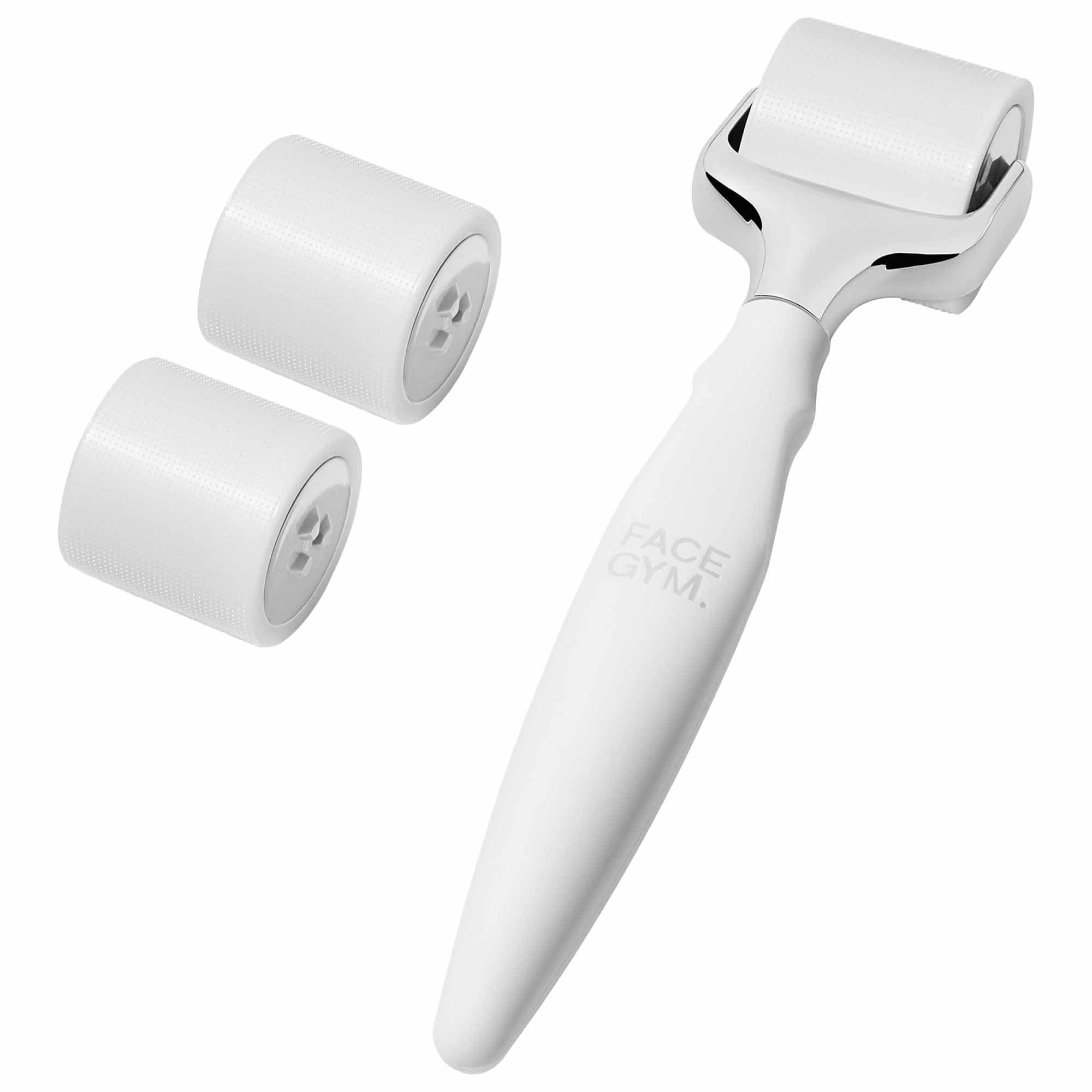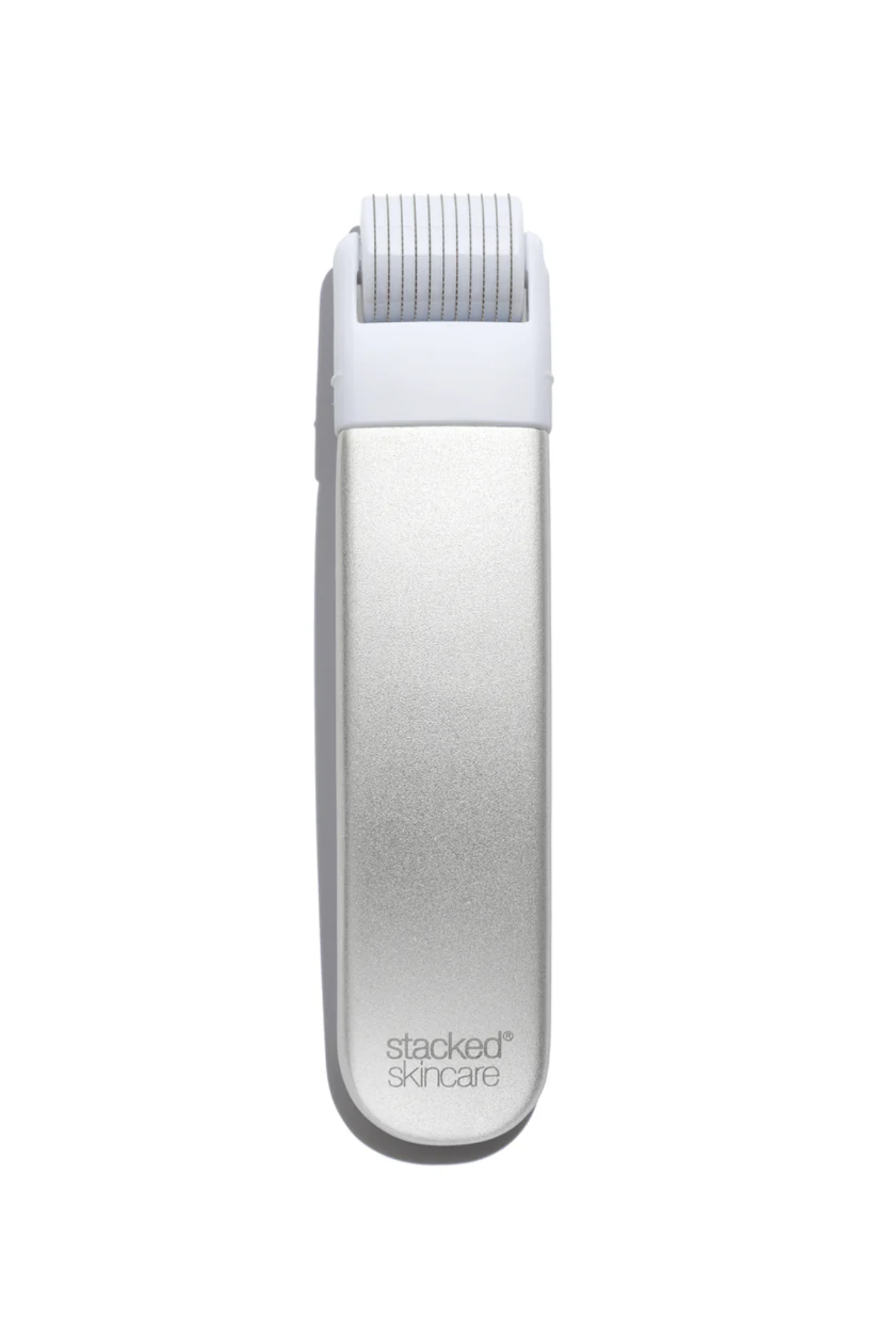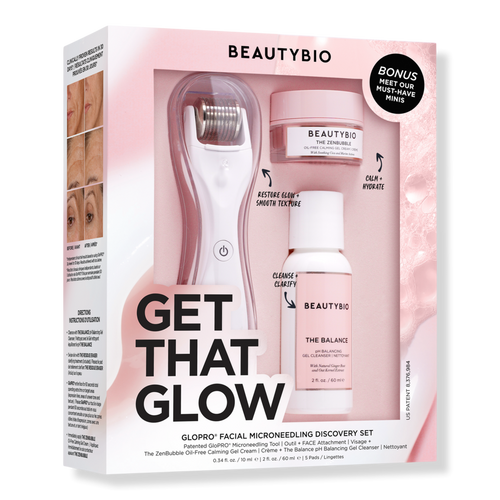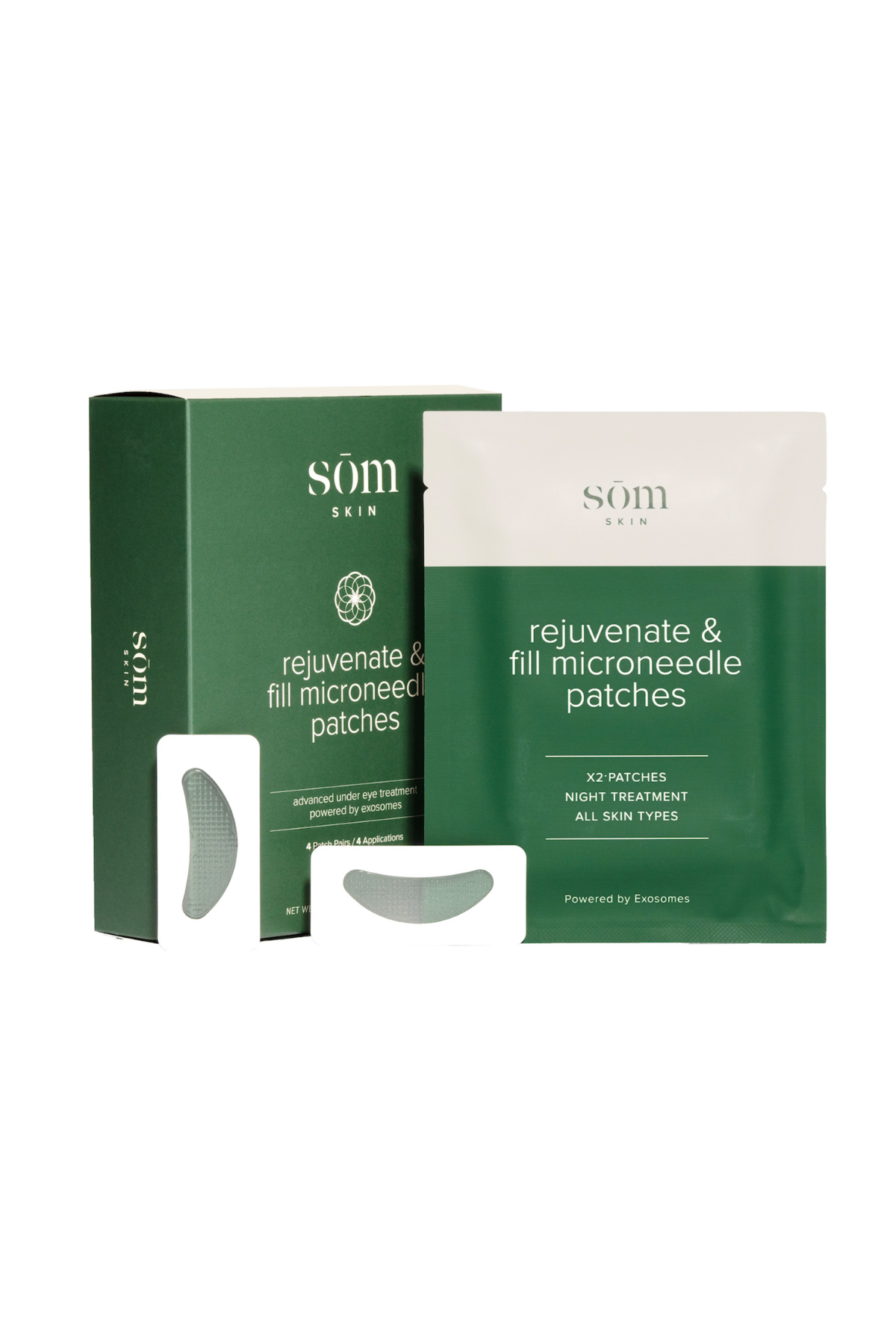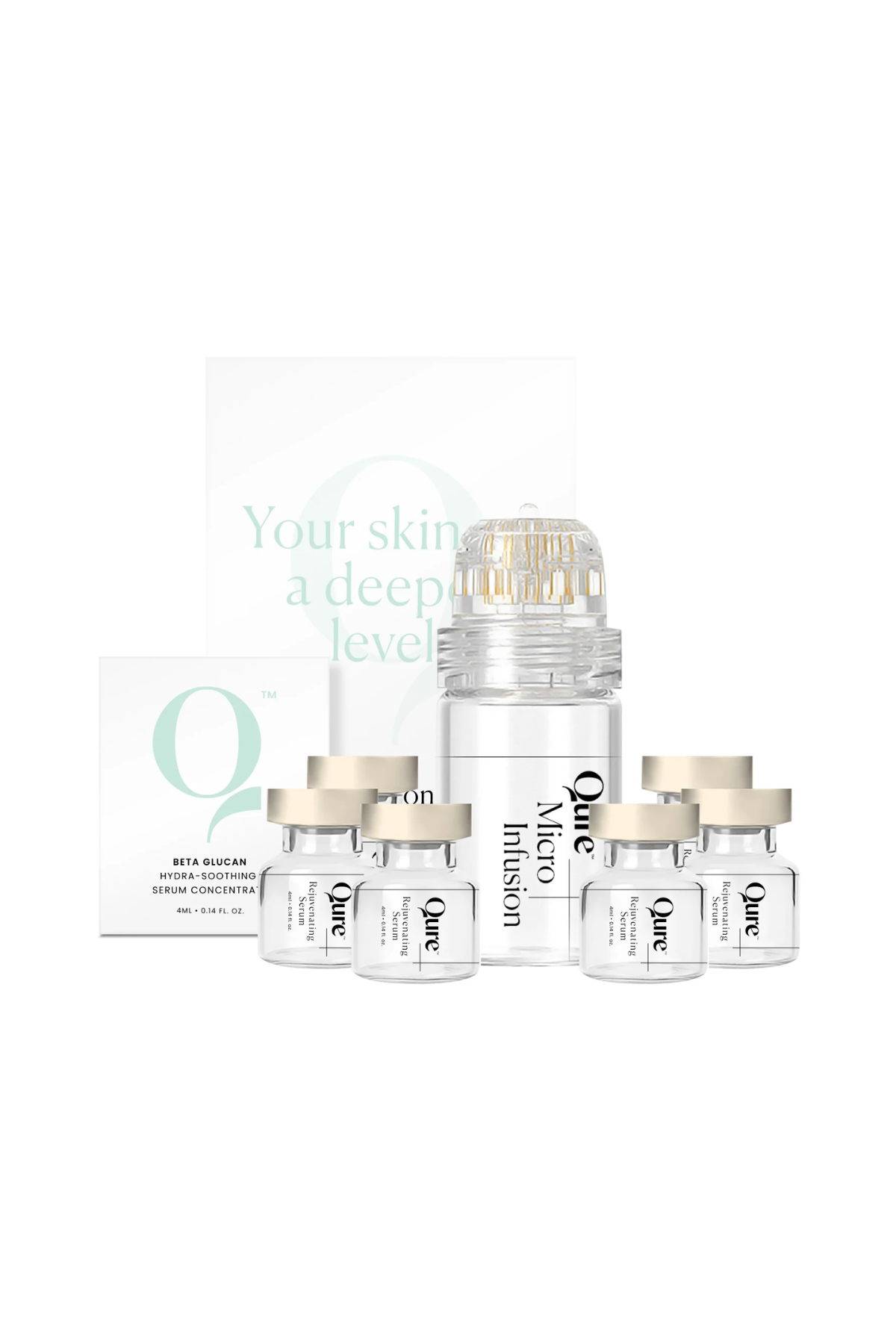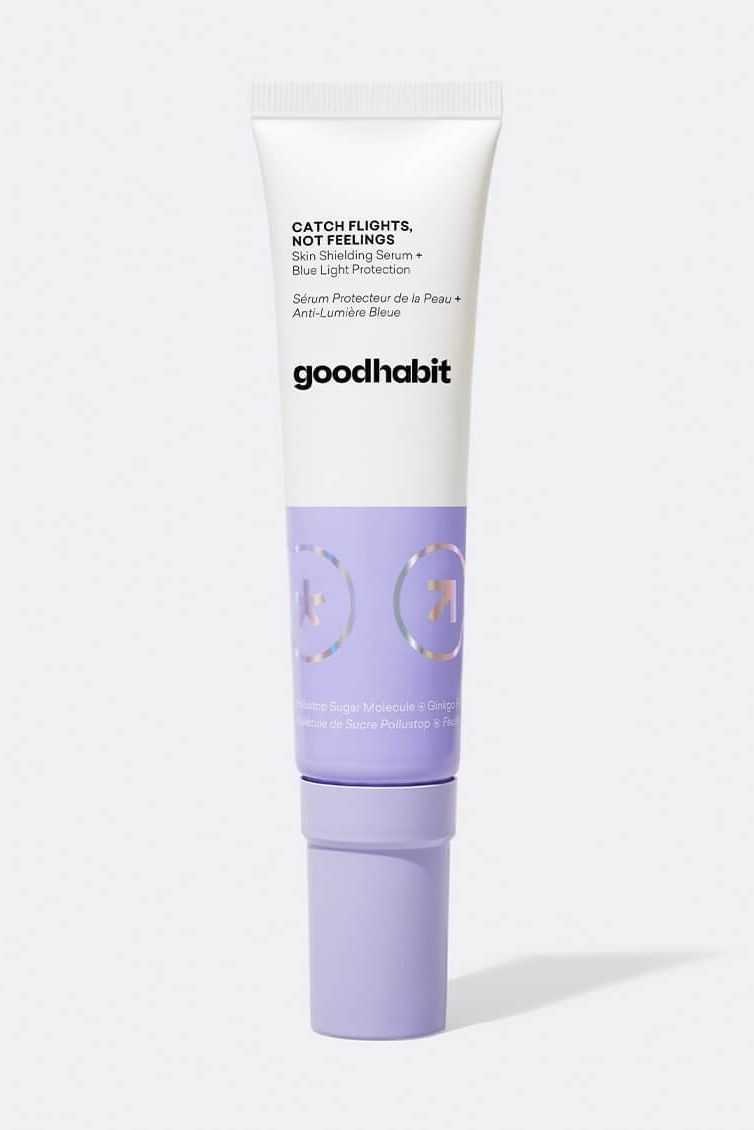Since I Started Microneedling, My Dark Spots and Acne Marks Have Faded
When done right, it can reduce fine lines, age spots, and scarring.

I almost got Botox for the first time last week, but I didn't! The reason? My physician's assistant told me that microneedling would be a better option for my 27-year-old skin. Also, let's face it: microneedles are a little less scary than syringes. While a professional treatment is the best way to try microneedling, at-home microneedling at home is also a viable option. When done correctly, benefits include better product absorption and the reduction of fine lines, age spots, and acne scarring. Skin is left glowing with improved tone and texture, which is all anyone can hope for, really.
Lisa Chevalier, physician associate and founder of SoVous Medical Spa and Laser Center in NYC, recommends in-office microneedling to nearly everyone (in fact, she's the very person who recommended it to me). While great on its own, it also complements the work of more invasive treatments. "Unlike laser and light-based treatments, microneedling is less photosensitizing, making it suitable for maintenance during sunny months or before traveling to sunny destinations for a collagen boost," she explains.
As for at-home microneedling? It can complement professional microneedling treatments and be incorporated into your skincare routine. However, its benefits are typically more modest compared to in-office procedures, which offer deeper penetration and more dramatic results. So, without further ado, let's get into it.
What Is Microneedling?
Microneedling is exactly what it sounds like: the process of using a bunch of tiny needles on your face. "Microneedling (in general) is a minimally invasive skin rejuvenation procedure that helps minimize the signs of aging, mend the appearance of acne scars and revitalize and rejuvenate aging skin," explains Dr. Jodi LoGerfo, DNP, APRN, FNP-BC. "Microneedling causes small micro-injuries in the skin that encourage the body’s own wound healing processes. In causing these micro-injuries, skin is remodeled of collagen and elastin."
Chevalier adds that professional microneedling utilizes a medical-grade device that penetrates the skin at deeper levels (up to 2.5 mm depending on the device). "This depth can target more severe skin issues like deep scars or wrinkles. The procedure is often combined with serums, protein-rich plasma, or growth factors to enhance results." Ultimately, microneedling sets the stage for dewy skin and an even complexion by boosting collagen production. It also helps with fine lines, age spots, and acne scarring.
If you're microneedling at home, the tool you usually use is called a dermaroller. It's made up of clusters of tiny, short needles that penetrate the skin when rolled across the face. Some brands also boast microneedling patches and masks that utilize similar technology, with no rolling required.

Freelance beauty writer Sophia Vilensky's skin before, immediately after, and one week after a microneedling and exosome treatment at Haus Salon in Minneapolis. Word on the street is the best results will be seen at around 12 weeks.
Is Microneedling At Home Safe?
Chevalier advises leaving the needles to the professionals. "Professional microneedling is generally more effective due to deeper penetration and the practitioner's expertise," she notes. But that's not why you're here, right? If you're still considering microneedling at home, there are key differences and considerations to keep in mind.
Get exclusive access to fashion and beauty trends, hot-off-the-press celebrity news, and more.
"You have to proceed with caution and attention to detail," she adds. "It is generally okay to do them between treatments to aid in product absorption and complement the in-office treatments."
One of the most important details to think about is the needle size. At-home microneedling involves using devices with shorter needles (usually up to 1 mm) that are specially designed for personal use. According to Chevalier, these devices are less invasive and generally safe for beginners. Note: if you're dealing with active acne you should absolutely skip microneedling at home altogether. You might spread bacteria and cause even more problems for your skin.
At-Home Microneedling Devices
If you choose to microneedle at home, make sure you pick up a proper device. "Not all at-home devices are created equally," explains Chevalier. "Some dermal rollers may have poor quality control in manufacturing, leading to bent needles that can cause skin shearing, micro-tears, blemishes, hyperpigmentation, or scarring—especially for clients with higher Fitzpatrick skin types."
Here are a few of Team Marie Claire's favorite microneedling at-home products to choose from.
How to Microneedle at Home Step-by-Step
- Cleanse your skin with your favorite facial wash.
- Apply a serum. Extra points for niacinamide and hyaluronic acid-based products for maximum supple skin.
- Roll vertically, diagonally, and horizontally two to three times in the four areas of the face: forehead, cheeks, lips/chin, and neck.
- Apply another layer of serum.
- Finish with your favorite moisturizer.
- Cool your skin with an ice roller or jade roller kept in the freezer.
Microneedling At Home Aftercare
If you look red after your microneedling session, don't fret. The inflammation usually calms down in about an hour. Make sure to avoid using retinol or retinoid products, and especially vitamin C, warns Benjamin. Chevalier also says you should refrain from applying makeup and sunscreen immediately after microneedling at home to prevent irritation and pore clogging.
On the flip side, serums and moisturizers that contain peptides, growth factors, and hyaluronic acid are fair game. In fact, they’re encouraged to help with cell turnover and ensure your new skin grows healthy and strong.
Microneedling At Home Results
Benjamin says that if you keep a solid rolling regime with the right serums you will start seeing results in a couple of weeks. “I always say, 'the more you roll, the more you glow'! However, the results will vary depending on your skin condition and concern," she says. You’ll know the treatment is working when your skin starts to look healthier and more radiant. The overall texture of your skin will improve, leaving a smooth and even brighter complexion.
"The results done in an office-based setting are frequently quite good because the depth of the wound is greater, resulting in more collagen and elastin production and overall, the treatment itself is safer," says Dr. LoGerfo. "Home treatments probably do not go deep enough to give dramatic results but can possibly make a bit of difference in skin rejuvenation—helping tone and texture."
Why Trust Marie Claire
For more than 30 years, Marie Claire has been an internationally recognized destination for news, fashion and beauty trends, investigative packages, and more. When it comes to the products Marie Claire recommends, we take your faith in us seriously. Every product that we feature comes personally recommended by a Marie Claire writer or editor, or by an expert we’ve spoken to firsthand.
Meet the Experts

Lisa M. Chevalier, M.M.S., PA-C is a NCCPA Board Certified New York and New Jersey licensed Physician Associate who specializes in both medical and cosmetic dermatology with a focus on laser therapies, injectables and aesthetics. She earned her master’s degree in medical sciences along with her certification in Physician Associate studies at Nova Southeastern University’s School of Medicine.
She completed her clinical rotations at New York Presbyterian Hospital, Weill-Cornell Medical College and Lenox Hill Hospital on Manhattan's Upper East Side. Prior to her Physician Associate studies, she earned a dual Bachelor’s degree in biology and chemistry from Baldwin-Wallace University while she worked as a nutrition counselor and a certified personal trainer.
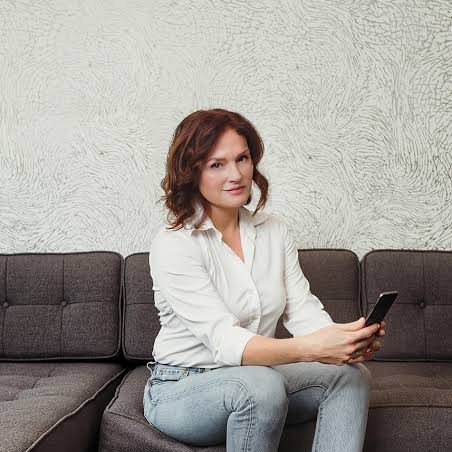
Award-winning esthetician and Founder of StackedSkincare, a high-performance skincare line of pro-grade serums, peels, and tools, Kerry Benjamin is a respected thought leader in product-based small business operations.
In just three years, Kerry went from working out of her home to singlehandedly creating a brand of skincare products and tools that disrupted the industry, became cult and celebrity favorites, and consistently winning awards.
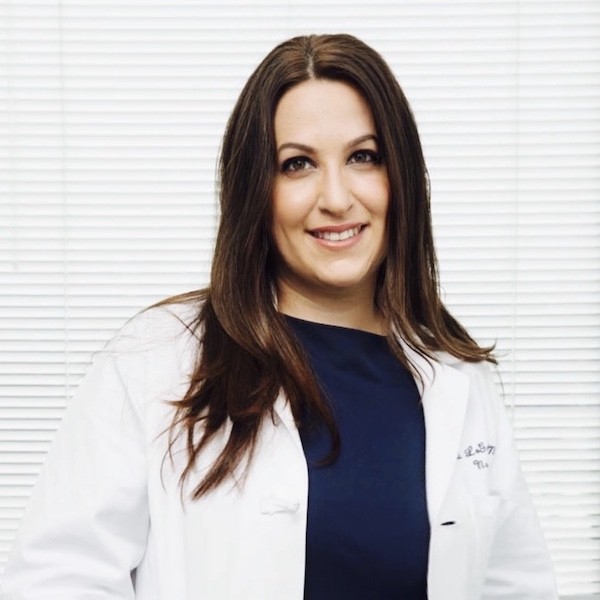
Dr. Jodi LoGerfo is a Doctor of Nursing Practice and a Family Nurse Practitioner certified in Family Medicine and Dermatology. She studied Pharmacy at St. John’s University and Nursing at Molloy College in Rockville Centre, NY, graduating magna cum laude with both her Baccalaureate and Master of Science degrees in Nursing. Dr. LoGerfo received her Nurse Practitioner Certification in Family Medicine in 2002 and Dermatology in 2015. She graduated summa cum laude with her Doctor of Nursing Practice from Molloy College in May of 2020.
Dr. LoGerfo has been at the Orentreich Medical Group, LLP since 1997 and became a Nurse Practitioner practicing alongside her mentors, Drs. Norman, Catherine and David Orentreich in 2002. She has over two decades of experience in treating a vast array of skin disorders, using the full modern arsenals of lasers and light devices, platelet rich plasma treatment, injectables and skin care products. She is considered a master injector.

Sophia Vilensky is a Freelance Beauty Writer at Marie Claire with a beauty, wellness, and entertainment journalism portfolio that includes contributions to Byrdie, Bravo, Teen Vogue, and Us Weekly. Growing up in a family of beauticians—and through her own personal studies—she developed an in-depth understanding of aesthetics, cosmetic product formulation, and beauty treatment development and has also held roles as a senior copywriter, content strategist, and proofreader for top beauty and wellness brands. Even so, you'd be hard pressed to find her with her hair and makeup actually done. Sophia is based in Minneapolis and is a 2019 graduate of the University of Minnesota, where she majored in English and minored in cinema studies. During her time at the university, she was the Arts & Entertainment Editor for the Minnesota Daily, earning the 2019 Editor of the Year award for her work. She connected deeply with the Twin Cities arts scene, collaborating with leading beauty professionals, designers, and artists. Graduating Summa Cum Laude, her thesis—a close-reading of Vanderpump Rules—was featured on NPR. When not immersed in writing or testing new products, Sophia enjoys watching reality TV, reading, and exploring the newest woo-woo wellness trends. Keep up with her on Instagram @sophiavilensky.
